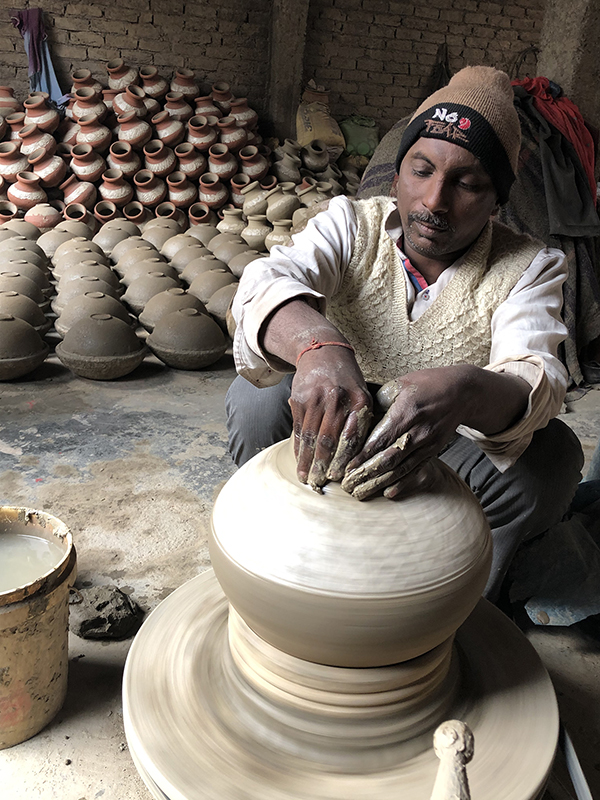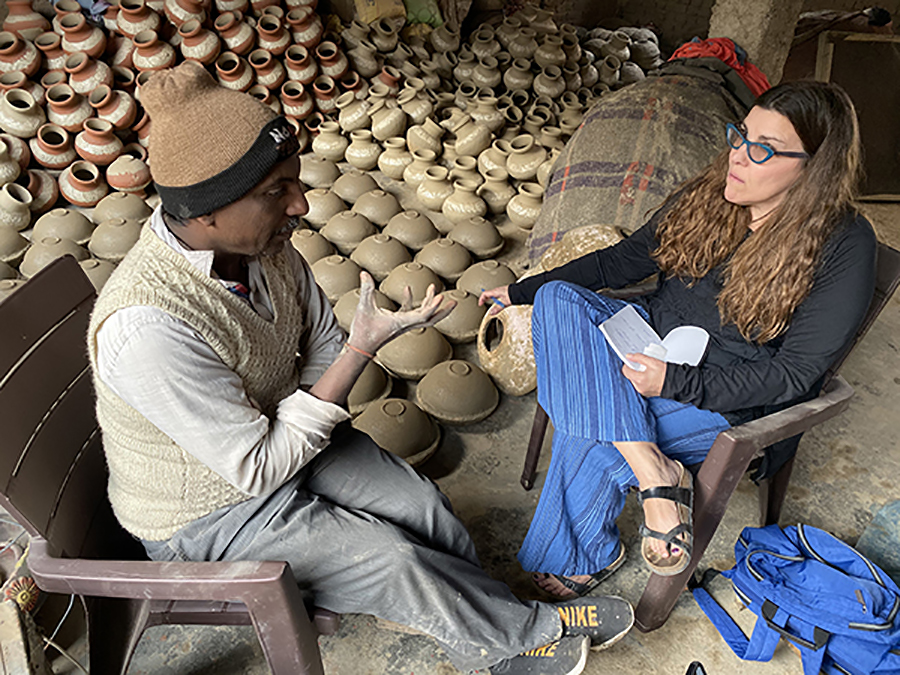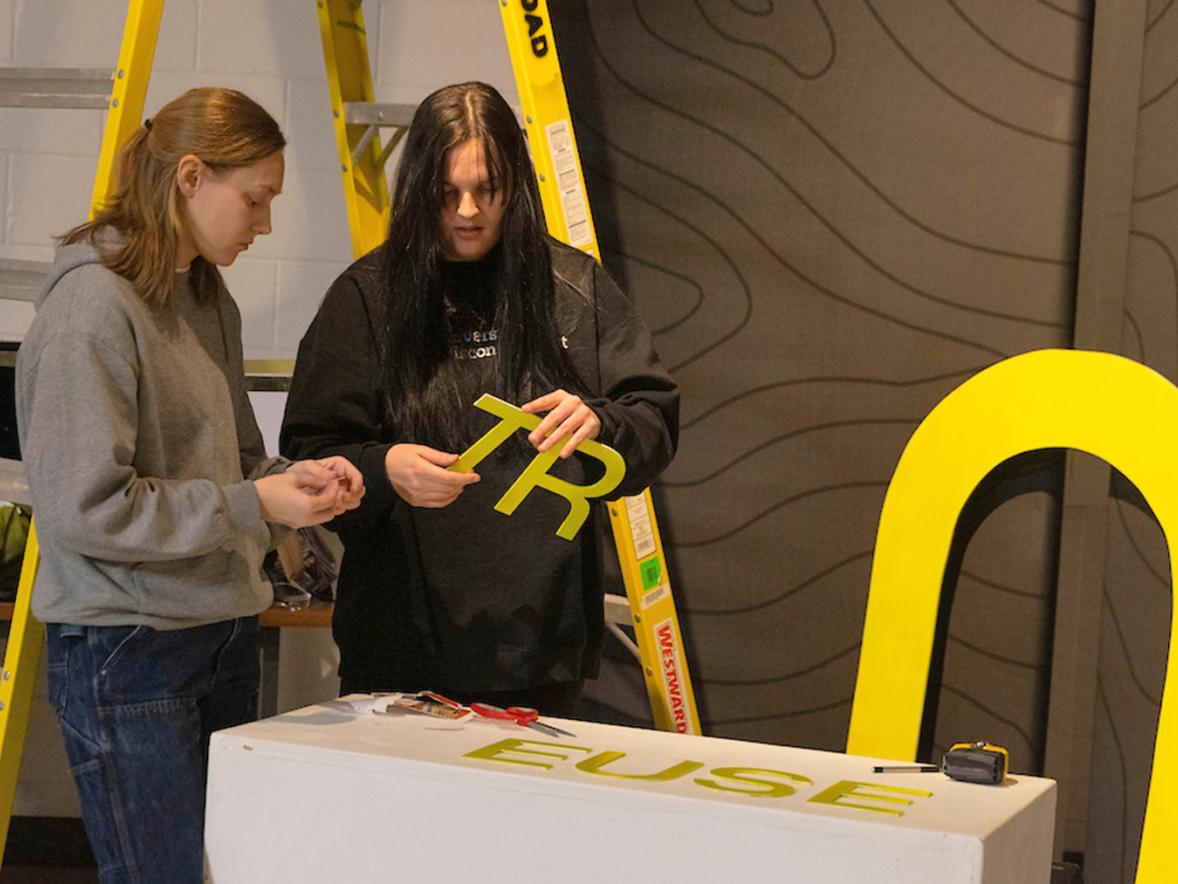In the village of Uttam Nagar, outside of New Delhi, India, families make pottery the way they have for generations, in their homes and courtyards with cows and chickens nearby.
Local clay is shaped by hand and with molds, fired in kilns, then sold mostly to residents for 30 to 50 rupees, or less than $1 a pot.
 “These potters supply the community with water jars, chai cups, oil lamps for the Diwali festival and wares for cooking aromatic dishes such as biryani,” UW-Stout Professor Kate Maury wrote in the September issue of Ceramics Monthly magazine.
“These potters supply the community with water jars, chai cups, oil lamps for the Diwali festival and wares for cooking aromatic dishes such as biryani,” UW-Stout Professor Kate Maury wrote in the September issue of Ceramics Monthly magazine.
The magazine, which has about 250,000 subscribers, featured Maury’s account of her recent trip to India to chronicle a traditional method of pottery-making and a way of life that in the near future could disappear.
“The next generation will likely break with tradition of inherited vocations for higher paying tech jobs in the cities. Over the years, I have seen regions of India continue to use folk pottery made by local potters; however, an increasing number of paper cups and plastic water containers are now more evident,” Maury wrote in Ceramics Monthly.
“Bulbous earthenware water jars are still found along roadsides for public use, and the thrown chai cup is much loved. However, certain progress in education, economy and aspirations of the next generation will drastically shift the market and future for the Indian production potter,” she wrote.
Maury is a potter and teaches ceramics, one of the concentrations in the Bachelor of Fine Arts in studio art at UW-Stout. Students create pottery in the ceramics studio.
She has been to India many times and seen other signs of change to a more modern way of living. The huts of 400 families of Uttam Nagar potters, for example, have been replaced by cement, condo-type homes.
“The pottery production happens directly in the center of the living space, and kilns are now tucked into or around the architectural elements such as the staircase in this new-style home. Somehow, modernity is in juxtaposition to centuries of tradition,” Maury wrote.
Family business
Maury visited a family pottery business, Jagmohan Mfg. Wholesalers and Retailers, run by brothers Jagmohan and Bhajanlal.Jobs in pottery are by gender, full families work, and vocation is still defined by caste, Maury said. Skills are passed down from one family and one generation to the next.

Pottery-making in the U.S. and most places is a creative endeavor but not in India. “Indians have made pottery for generations, never considering it ‘art.’ It is a job to them, not an expressive thing,” Maury said.
“The production pottery of India isn’t industrial like Americans may think of it. It is a cottage industry, and the way that pottery is made uses molds and throwing, which is pretty complex,” Maury said.
In the Ceramics Monthly article, Maury documented the process used by the potters, also called kumars. Her description of the water jars they make included:
“Inside the open courtyard, the sun cascaded over the dirt floor illuminating a sea of pots in various phases of production. The brothers specialize in two-piece press-molded earthenware water jars with an added wheel-thrown neck. Jagmohan squats at his motorized wheel, throwing what appear to be bowl forms. He is preparing the two-part molds for next season. After the firing, these bowl-like forms, equal in diameter and depth, will serve as the top and bottom of the press mold for making a water jar.”
Research partially funded by grant
Maury brings her research and professional experiences into her classes. The trip to India was funded in part by a Professional Development Grant from UW-Stout.
“Students can learn traditional techniques from these potters,” she said.
Although the article was her first in Ceramics Monthly, she previously has had a photo on the cover and other photos published in the magazine. She also published an article in a subsidiary magazine, Pottery Making Illustrated, about her press-molded working methods.
Maury is a board member at the Northern Clay Center in Minneapolis. Her work has appeared in regional, national and international shows and has been published in numerous books.
The studio art program is one of six BFA programs, along with a Master of Fine Arts in design, in UW-Stout’s School of Art and Design.
###
Photos
Jagmohan creates the neck of a water jar at his pottery production business in Uttam Nagar, India, near New Delhi. / Ceramics Monthly photo
UW-Stout Professor Kate Maury interviews potter Jagmohan when she visited the business run by him and his brother in India. She documented their pottery-making process in a story for the September issue of Ceramics Monthly magazine.






